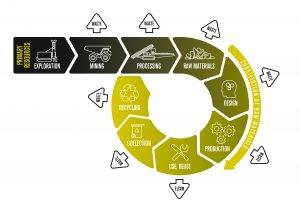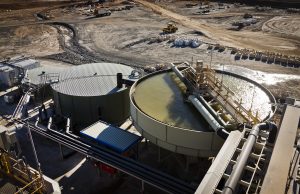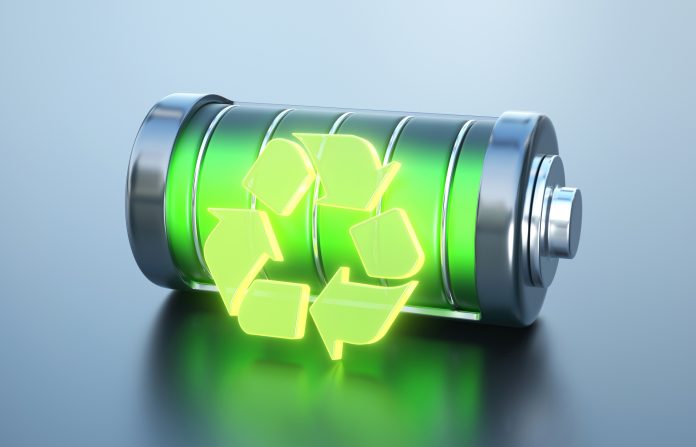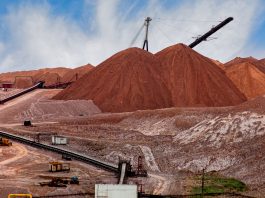The urgent need to create a global framework to support a circular economy for critical materials is detailed by Ian M London, Executive Director of C2M2A, with support from Jeff Townsend and Kirsty Benham, Founders of CMA.
Critical materials are fundamental to both advanced and clean technologies. Access to a secure supply of these materials is key to maintaining quality of life, geopolitical and economic stability and is necessary for the transition to a climate-neutral global economy.
The United Kingdom’s Critical Minerals Association (CMA) and the Canadian Critical Minerals and Materials Alliance (C2M2A) organised and hosted an industry-led, two half-day bilateral workshop held on December 9 and 10, 2021. Participants were drawn from industry, academia, and government from both countries.
The workshop was conceived with the goals of supporting the UK and Canadian Governments’ objectives on supply chain security and the growth of markets for primary and secondary critical materials through fostering and leveraging member expertise of critical minerals alliances across ally nations.
The workshop facilitated informed and helpful discussions on identifying how Canada and the UK can co-operate to support the circular economy for critical materials and prepare for future demands.
A series of panels addressed a wide range of opportunities, challenges, and potential collaborative approaches related to:
• The potential market for secondary critical minerals, including what a robust secondary
market could look like on a global stage;
• Battery, electronics, rare earth magnet and minor metals recycling;
• Critical minerals extraction from secondary and recycled sources;
• What industry requires going forward –
regulations, permitting, producer responsibility,
investment and risk mitigation, international standards; and
• Waste collection, research and development, investment, and processing, and what an alliance of like-minded governments could do to support such sectors.
Canada’s list of 31 critical minerals and the UK Government’s ‘Net Zero Strategy’ focused the discussions on:
• Neodymium rare earths for magnets in wind turbine generators, electric vehicle motors, and in future marine engines;
• Cobalt, lithium, nickel, and carbon in electric vehicle and stationary energy storage batteries; and
• Tantalum, gallium, rhenium, scandium, and samarium in electronics and special alloys.
What is the circular economy?
While the definition of the circular economy continues to evolve, the workshop adopted the following infographic to frame the discussions.

A circular economy considers the full life cycle of critical materials from primary production to ultimate disposal, emphasising minimum waste and environmental impact through efficient reuse, recycling, plus environmental, social and governance (ESG) compliance.
The circular economy for critical minerals does not just denote ‘recycling.’ The principle of waste reduction should occur throughout the entire supply chain, and many circular economy practices for critical minerals arise well before a product reaches end-of-life.
For example, at the primary production stage, mines that typically focus on base metals have the opportunity to extract lesser-known ‘critical minerals’ from their waste as by-products. This reduces the amount of waste rock and the number of new mines needed for critical minerals.
Mineral wastes such as tailings are rich sources of critical minerals that, in comparison to primary sources, have been pre-processed, offering an easy to access, low-cost option to secure critical minerals. However, adding new technologies to extract by-products to a company’s operations for critical minerals, that may not immediately compensate for additional costs, needs encouragement and support from government.
At the midstream stage, when mined materials are transformed into the compounds needed by manufacturers, there are many circular economy opportunities. Instead of being wasted, offcuts from the manufacturing process can be remanufactured. This is also where recycled materials can be reintroduced into the supply chain as secondary feedstock.
However, the UK currently has very little midstream or recycling capacity for critical minerals. Hypromag, Less Common Metals, and Pensana are the only companies with such capacity in the rare earth element space. Canada has several industrial facilities and resources, but these need to be augmented or repurposed to meet the demands of recycling critical materials. The need for Canada and the UK to work together on cross-border recycling of critical minerals is high.
When advanced high-tech products like batteries, solar panels, mobile phones, and computer hard drives reach their end-of-life, these items can be processed to recover minerals and materials and sold back to the manufacturing sector as secondary feedstock. This reduces the pressure on primary inputs and supports the circular economy.
Consumers also have an essential role to play. Demand for critical minerals will continue to increase as the population grows and more people look forward to higher living standards. For example, there will always be an element of waste in buying new mobile phones and discarding not-quite-outdated phones each year. People who are serious about the tenets of a circular economy should remember the principles of repair and reuse and recognise that hefty consumerism is ultimately fuelling our increasing need for critical minerals.
As the volume of end-of-life high-tech technologies and the critical minerals contained therein are relatively small, recovery and recycling efforts are nascent. A vicious circle arises when companies are unable to invest in a recycling plant because the feedstock is small and unreliable. Products are not being collected for recycling because there are not enough recycling plants for these niche materials. With the demand for advanced technologies expected to increase over the coming decades, governments now have opportunities to work with industry and consumers to foster a circular economy approach for critical materials.

Highlights from the UK-Canada Bilateral Regulatory Workshop
The workshop engaged senior technical, business and policy practitioners and thought leaders from Canadian and UK industry, government, and academia. Leveraging the advances of virtual meeting technology and adopting a moderated panel discussion format, participants shared their experiences, plans, and concerns and debated priorities to ensure collective successes.
Participants included Avalon Advanced Materials, Britishvolt, UK Government departments DEFRA and BEIS, Encorp Pacific – Return It, EPRA, Geomega Resources, Glencore, Hypermag, Li-Cycle, Materials Processing Institute, Natural Resources Canada, Neo Performance Materials, Rio Tinto, SRK Consulting, TechMet, University of Birmingham and the WEEE Forum.
The initial analysis from the two-day event suggested five key areas that need addressing, and addressing quickly:
• Re-classify ‘waste’ to enable more to be captured and fed into the circular economy. This will also help make it easier for consumers to recycle their products;
• Enhance data collection and establish blockchain protocols to track and trace capability to enable circular economy companies to understand better what products are where, in what condition, and at what point of their life cycle;
• Legislate alignment among nations around the
collection and international transporting of waste/secondary sources. Political spheres need to make it easier and more commercially appealing for companies to access materials across nations, states, territories, and devolved administrations;
• Boost significant investment in midstream processing sectors to be ready for both primary and secondary/recycled feedstock. There is a disconnect between the current commercial viability of midstream operations and the long-term green objectives of nations. This financial issue needs to be overcome; and
• Boost university and technical/college programmes to attract and build talent pools to
continue innovating, developing, and operating critical materials supply chains in support of advanced manufacturing and clean tech economies. Efforts are also needed to raise the profile and engage entrepreneurship and economics policy. Industrial development and related finance policy skill sets unique to emerging critical material supply chains are also required.
Developing a circular economy for critical minerals will require significant action and collaboration between governments, industry, and academia.
It is clear that while both industry and government press towards the future green industrial revolution, bold transitional policy, investment bridges, and innovation by industry and governments along the entire material supply chains are needed. Consumers, industrials, and material producers all want reliable and secure supply chains, but they also recognise that they must be financially viable.
Creating an enabling environment by reviewing cross border legislation, reclassifying waste, enhancing data collection, supporting investment in midstream/ recycling initiatives, encouraging extraction of critical minerals as by-products, and building a talent pipeline of future experts cannot wait any longer. Action is needed now.
Ian M London, P.Eng, MBA
Executive Director
Canadian Critical Minerals and Materials Alliance (C2M2A)
www.c2m2a.org
https://twitter.com/C2M2Alliance
Please note, this article will also appear in the ninth edition of our quarterly publication










